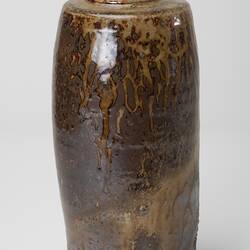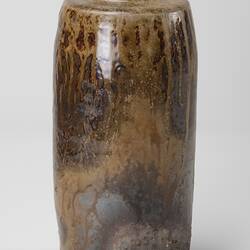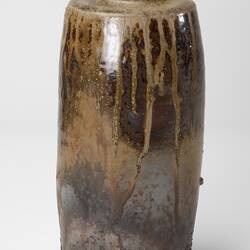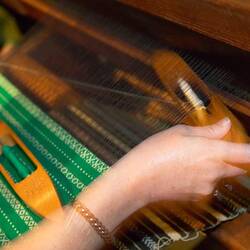Summary
Vase made by Heja Chong, circa 1995. Heja is a Bizenware potter born in Japan of Korean parents. 'The vase was placed in the left side of front chamber where much ash falls on the pots. The lower part of the vase has a dry glaze effect due to unburnt embers covering the pot....the upper part of the pot had been through a long ordeal of fierce flame, and the ember was falling directly on the Vase for many days that resulted glossy and overflowing glaze effect' (Heja Chong 1995).
Bizen ware represents the oldest surviving form of pottery, with a tradition extending over 1000 years in Japan. The emphasis of this style is in the firing process where pots are fired in a wood fire kiln at very high temperatures over a period of many days.
Physical Description
This vase is very simple in design, narrow at the base, widening at the top before closing around a narrow neck. The vase was made on a potter's wheel and fired in the traditional Japanese Bizen ware technique. The vase is an earthy colour and though unglazed is glossy and textural from the firing process.
More Information
-
Collection Names
-
Collecting Areas
-
Acquisition Information
Purchase
-
Artist
-
Classification
-
Category
-
Discipline
-
Type of item
-
overall dimensions
110 mm (Length), 110 mm (Width), 260 mm (Height)
-
References
Contemporary Craft and Cultural Identity Project, by Deborah Tout- Smith and Anna Malgorzewicz for MoV and Monash University History Dept, 1992.
-
Keywords
Artworks, Containers, Crafts, Cultural Traditions, Domestic Equipment, Handcrafts, Japanese Communities, Japanese Culture, Pottery





